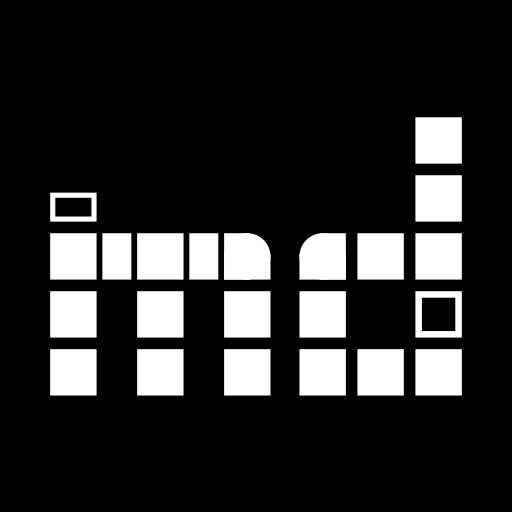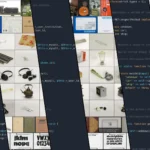After the blog has been very quiet this year with regard to the technical development of museum-digital, we are now trying to publish the summaries of new developments – enriched with screenshots – that are prepared for the monthly “regional administrators” rounds in Germany anyway.
These are in the form of listings, and this is how it should be here too.
Frontend
Features & Improvements
- Some improvements in background scripts, especially better handling of timeouts when calculating “Similar objects” in very large instances
- Contributors, linked locations and times for an object group are now listed alphabetically by name
- Table headers for event components (who, when, where) are now only displayed in the A4 PDF if there is also content for the row
- New search option for object searches: “Is currently on display”
- Links to the Themator now use the new URL scheme of the Themator
(https://themator.museum-digital.de/t/690 instead of https://themator.museum-digital.de/ausgabe/showthema.php?m_tid=690&tid=690)
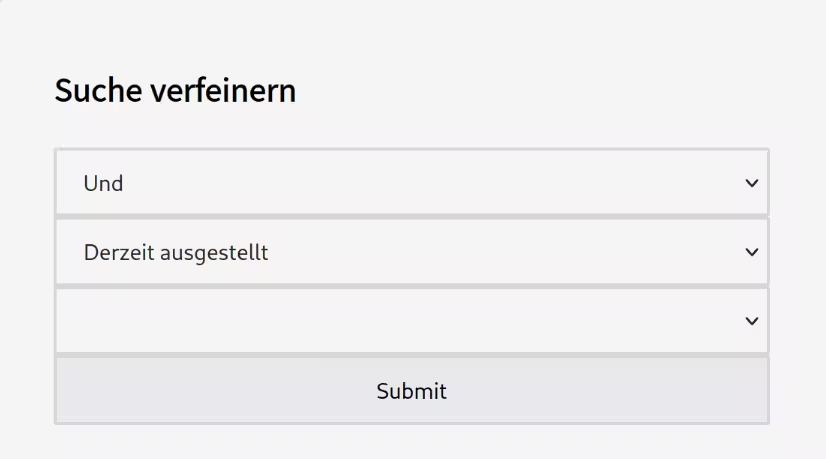
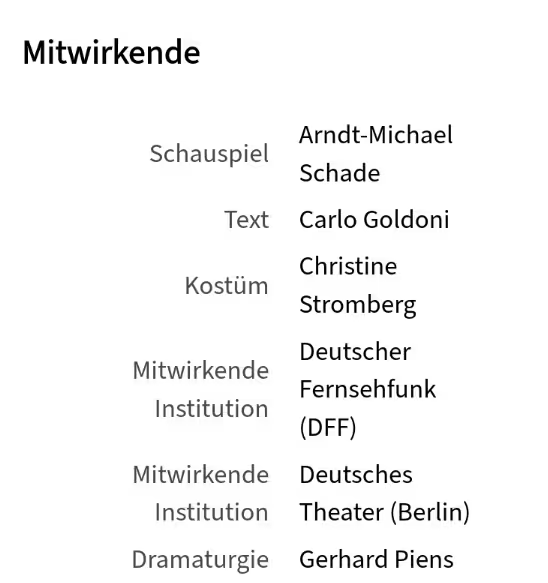
Bugfixes
- Error when searching for controlled list terms that contained multiple spaces via the “Refine search” overlay (search for license “Public Domain Mark”)
- Exactness setting in the “refine search” overlay was not transferred to the actual search query
- Simple embedding of an object (analogous to YouTube videos, for example; accessible via the “Cite” menu of an object page) had various errors / now works again
musdb
Features & Improvements
- In the API documentation of musdb there is now a note that the frontend also has an API
- Frontend API
- You do not need to authenticate yourself to use the frontend API
- The frontend API tends to be faster and easier to use
- Is read-only
- musdb API
- Can do more: Can also see non-public stocks and fields / data types
- Is much more granular (more queries for the same data, but you likely get exactly the data you are looking for instead of e.g. all data known about a given object)
- Can be used for writing data
- Frontend API
- Suggestion lists when searching for vocabulary terms in the side column of the object search page have been revised
- Tooltips appear when hovering over
- Implementation in Vanilla JS, removing jQuery
- (this means significantly better performance of the search results list in list format, because jQuery no longer needs to be loaded)
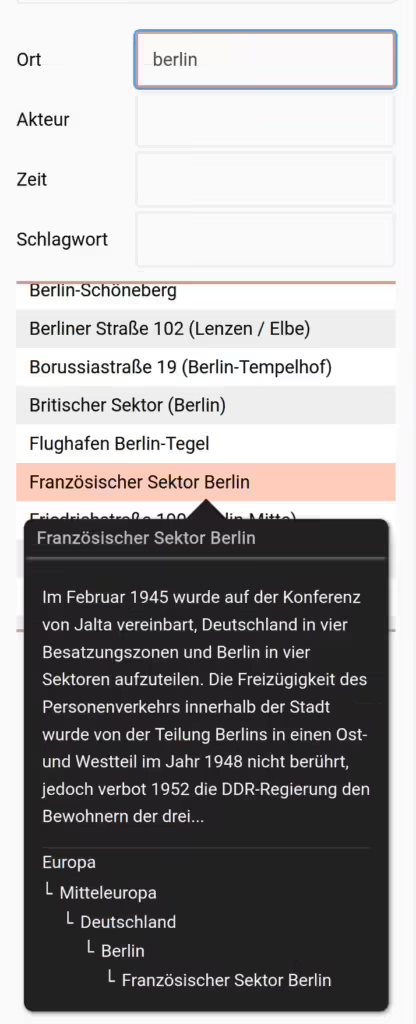
- User page / Login
- Log of logins now also with IP and user agents
- Login via login persisted in the browser (“Remember me”) is logged and displayed
- All browsers permanently logged in via cookie are forced to log in again after a password change
- New option to invalidate all remembered logins on other devices (browser must be logged in again)
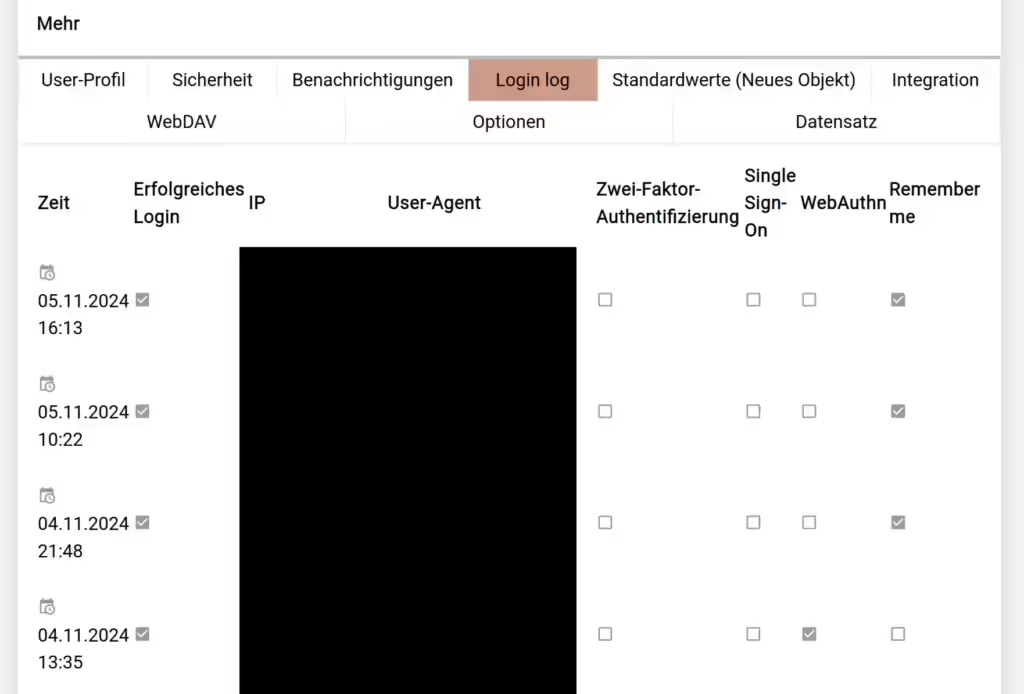
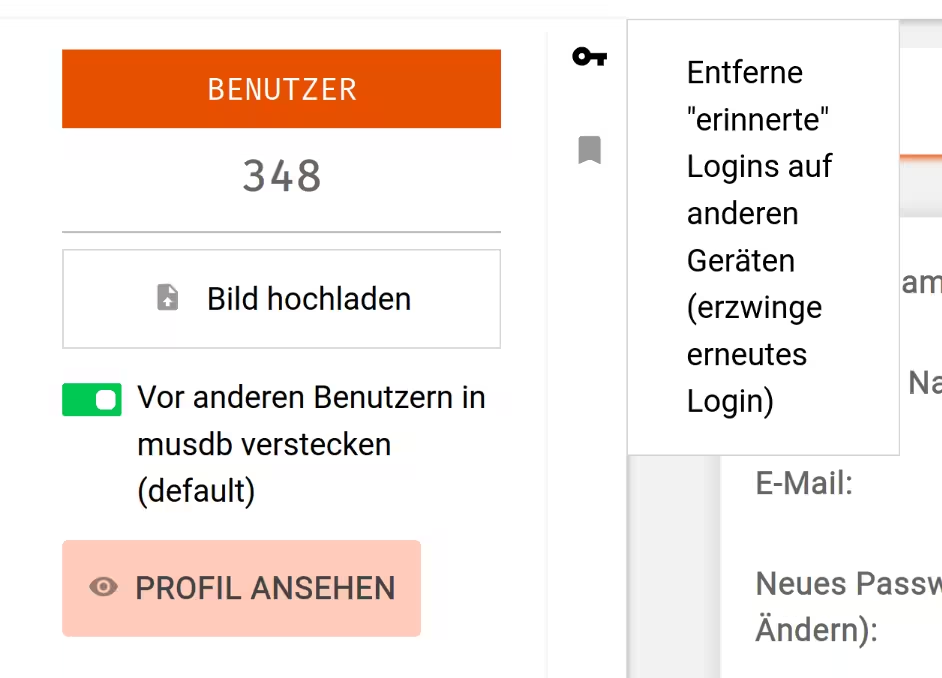
- Object
- More restrictions for the publication of object data records.
- An object can no longer be published if:
- … the object name is the same as the object description
- … the description contains the character string “lorem ipsum”
- When object entries are unpublished / hidden, the images linked to the image are renamed (thus invalidating links to the images). When publishing the object again, this is reversed so that existing links work again.
- Spaces in selection lists are now listed alphabetically as the actual location when linking
- Literature
- Acquisitions can now be linked to literature
- Previous owners etc. can thus be linked to a literature entry
- Spaces (actual location) can be linked to literature
- Acquisitions can now be linked to literature
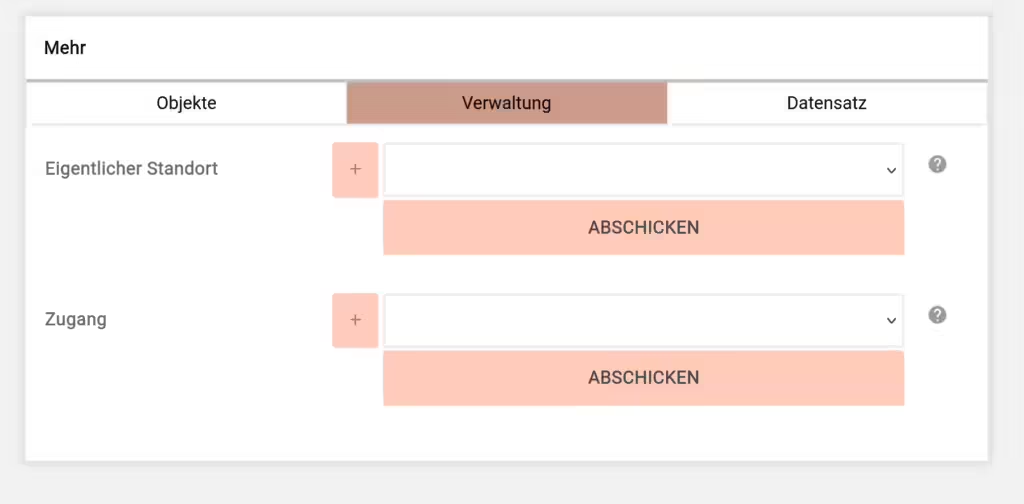
Bugfixes
- Overlay for setting searches for objects: Multi-word search terms were converted into multiple searches instead of being searched as a string of words (“red helmet” > “red” AND “helmet” instead of “red helmet”)
- Error when searching for controlled list terms that contained multiple spaces via the “Refine search” overlay (search for license “Public Domain Mark”)
Importer
- Link between literature and spaces (actual location) as well as acquisitions is implemented in the “core” of the import tool
- ImageByInvno parser (assignment of images to objects via inventory numbers contained in the file name) can now be used to import PDF files
files.museum-digital.org
- Added a small script to enhance PDF metadata based on an XML sidecar file. See e.g.: https://files.museum-digital.org/de/Praesentationen/2024-10-18_md-deutschland-eV-stellt-sich-vor_Usertreffen_MA.xml
Main post image generated using illustriousXL_smoothftSPO
